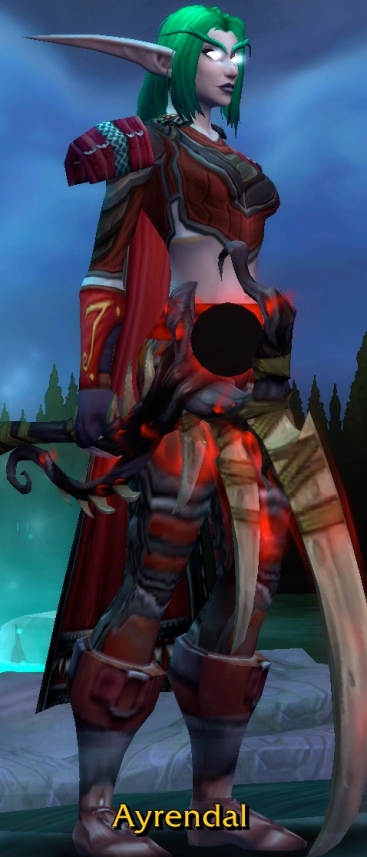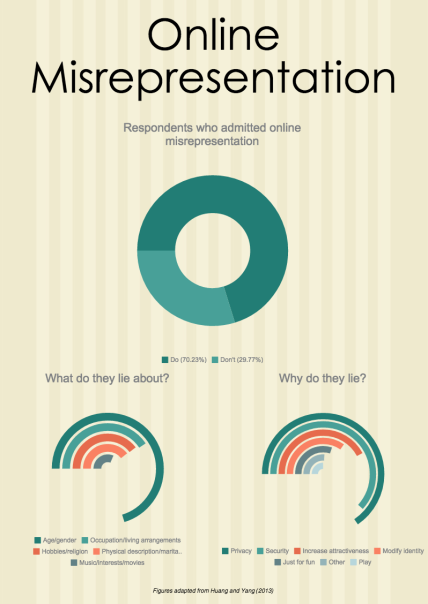Making my first “feature” (!) length video.
Here she is. Enjoy. After the panic died down, I did.
Exploring the concept of online dating after 50 was enlightening. It showed that firstly, there’s been plenty of research into online dating, but very little focussed on the challenges and movitations of older people engaging in the practice. What I did find that despite public impressions, it is being rapidly adopted, and is widely accepted by over-50s.
Creating the video was – as expected – the biggest challenge for the unit. Purely due to my inexperience. Our Tiffit challenges gave me a basic tool set. But I still wasn’t prepared for the enormity of the task. Producing a seven-minute video with nothing but an iPhone for shooting footage is for the brave, and possibly experienced.
I’d suspected I was going to experience issues, so I’d planned an escape route, if you will. A second topic researched and ready to go – it’s the one you see above. My initial attempt, around technological relevance in culture really needed “live” footage; even spent half a day at ScienceWorks having quite a bit of fun fiddling with shooting footage. Poor lighting and shaky video meant it was just not usable without advanced editing software. Which, I have to say, iMovie most certainly isn’t.
So, attempt two; less visually appealing than I’d like – that’s that inner perfectionist again – involved a commentary over a mixture of my own photos, infographics and some from others for thematic purposes. Selling soul for tripod-mountable camera!
From having, essentially, worked through the process twice, it would be much more efficient, and less time consuming to produce a video from your own live footage than the route I ended up using. Collecting, collating and recording attribution details for the creative commons content took up more than a day – shooting seven minutes of footage (in one go!) takes… well, seven minutes.
I did learn some really great stuff on the way. Like – in iMovie, the best way to format your credits is by copying them into textEdit to format, then paste back into the effects window. Much pain avoided. And, transitions are fiddly, finiky little creatures. You’ll likely see some examples where I’m still half a second late or early. Where I’d invest more time is audio; getting levels anywhere close to sane is a process not for the faint hearted; worth the time, for your viewer’s sake.
Again, likely because my experience is lacking, the scripting was the most mentally-taxing part of the process. But I suspect I’m only becoming comfortable with the video editing aspect because of the many elements I’m not even aware of yet; let alone mastered. I was learning, and trying new things inside iMovie right up to the minute before I exported the video.
There are limits to the technology I using. Specialist equipment would go a-ways towards increasing my confidence, and skills. But the most important thing, yep, it’s the learning by doing. My challenge to myself – do more, even if it’s unpublished. I’ve enjoyed the process. Onwards!
I did learn a couple of surprising factoids in the process. Abraham Maslow isn’t responsible for the famous pyramid – at least initially. His original text contains a detailed explanation of the structure, but no illustration. Likely because of the cost of incorporating engravings in publications in 1943.
And; while I was exploring the links between Myers-Briggs and the Johari Window I found that most of the people who rate as highly “Unrealistic” on the Myers-Briggs assessment (Nordvik 1996) are also the most likely preference of partner (Scott 2016). So, either the rest of us are delusional; or teachers, lawyers, flight attendants and designers have it right.
607 words
Nordvik, H 1996, ‘Relationships between Holland’s vocational typology, Schein’s career anchors and Myers-Briggs’ types’, Journal of Occupational and Organizational Psychology, vol. 69, no. 3, pp. 263–275.
Scott, K 2016, ‘What job is considered the most attractive by a potential partner?’, Employee Benefits, retrieved 10 May 2017, https://www.employeebenefits.co.uk/issues/september-online-2016/job-considered-attractive-potential-partner/.
Broader ALC203 activity
I’ve been continuing to tweet, and blog. And have made myself a presence on some additional social networking sites – updating and filling in details on my LinkedIn account and adding a Tumblr profile for curiosity’s sake.
Probably the biggest change in the last month has been producing my own artwork to identify myself online. Although it’s still a work in progress, I’m happy to say that my creativity has been inspired by the unit; and I’m confident that Week 12 isn’t the last you’ll see of me.
- Twitter: https://twitter.com/ayrendal
- About.me: https://about.me/ayrendal
- SoundCloud: https://soundcloud.com/ayrendal
- Reddit: https://www.reddit.com/user/ayrendal
- Facebook: https://www.facebook.com/lara.milvain
- LinkedIn: https://www.linkedin.com/in/lara-milvain/
- Flickr: https://www.flickr.com/photos/laramilvain/
- YouTube: https://www.youtube.com/channel/UCtbdjec_CdIGH1I5SNHee4w
- Tumblr: https://www.tumblr.com/blog/ayrendal
References for video – :youtu.be/0TrlK2FLcVo:
Video produced for ALC203, Trimester 1, 2017
References – Academic
Adams, MS, Oye, J & Parker, TS 2003, ‘Sexuality of older adults and the Internet: from sex education to cybersex.’, Sexual & Relationship Therapy, vol. 18, no. 3, pp. 405–415.
Alterovitz, S & Mendelsohn, G 2009, ‘Partner Preferences Across the Life Span: Online Dating by Older Adults’, Psychology and Aging, vol. 24, no. 2, pp. 513–517.
Cassavetes, N 2004, The Notebook, Warner Bros., retrieved May 13, 2017, http://www.imdb.com/title/tt0332280/?ref_=ttfc_fc_tt.
Communication in the Real World: An Introduction to Communication Studies 2016, University of Minnesota Libraries Publishing, Minneapolis, MN, retrieved 10 May 2017, http://open.lib.umn.edu/communication/.
Coupland, J 2000, ‘Past the “Perfect Kind of Age”: Styling selves and Relationships in Over 50s Dating Advertisements’, Journal of Communication, vol. 50, no. 3, pp. 9–30.
Fileborn, B, Thorpe, R, Hawkes, G, Minichiello, V & Pitts, M 2015, ‘Sex and the older single girl: Experiences of sex and dating in later life’, Journal of Aging Studies, vol. 33, pp. 67–75.
Goode, E 1996, ‘Gender and courtship entitlement: responses to personal ads’, Sex Roles: A Journal of Research, vol. 34, no. 3/4, pp. 141–169.
Hillman, JL 2000, Clinical perspectives on elderly sexuality., Kluwer Academic Publishers, New York.
Hillman, JL 2012, Sexuality and aging: clinical perspectives, Springer, New York.
Luft, J & Ingham, H 1955, ‘The Johari Window, a graphic model for interpersonal relations’, in Western Training Laboratory in Group Development, UCLA Extension Office, Los Angeles.
Malta, S 2007, ‘Love Actually! Older Adults and their Romantic Internet Relationships’, Australian Journal of Emerging Technologies & Society, vol. 5, no. 2, pp. 84–102.
Maslow, AH 1943, ‘A theory of human motivation’, Psychological Review, vol. 50, no. 4, pp. 370–396.
McWilliams, S & Barrett, A 2014, ‘Online Dating in Middle and Later Life: Gendered Expectations and Experiences’, Journal of Family Issues, vol. 35, no. 3, pp. 411–436.
Miller, RK & Washington, KD 2017, Consumer use of the internet & mobile web 2016-2017 3rd edn, Richard K. Miller & Associates, Loganville, GA.
Nordvik, H 1996, ‘Relationships between Holland’s vocational typology, Schein’s career anchors and Myers-Briggs’ types’, Journal of Occupational and Organizational Psychology, vol. 69, no. 3, pp. 263–275.
Ramirez, A, Sumner, EM, Fleuriet, C & Cole, M 2015, ‘When Online Dating Partners Meet Offline: The Effect of Modality Switching on Relational Communication Between Online Daters’, Journal of Computer-Mediated Communication, vol. 20, no. 1, pp. 99–114.
Wang, C-C & Wang, Y-T 2010, ‘Who is Everyone’s Darling in Cyberspace? The Characteristics of Popular Online Daters’, International Journal of Cyber Society and Education, vol. 3, no. 1, pp. 69–98.
Credits – Photographic
Sodret, J (2014), dansen gamionios, https://www.flickr.com/photos/illusionwaltz
Seneca, T (2005), More Dolls, https://www.flickr.com/photos/misstracyjo/164673105
diepuppenstubensammierin (2011), caco grandmothers, https://www.flickr.com/photos/diepuppenstubensammlerin/5555981164
Lorena (2010), Perrine Doll, Mireya, https://www.flickr.com/photos/yaxchibonam/4531221109
Hopkins, K (2005), Dates, https://www.flickr.com/photos/accidentalhedonist/20699016
gatineaujoe (2013), A peel ing, https://www.flickr.com/photos/gatineaujoe/8455130240
Sodret, J (2014), Babydoll, https://www.flickr.com/photos/illusionwaltz/13452120604
MilanaAliana (2014), Boda Marina i Bernat 4, https://www.flickr.com/photos/milanaaliana/8469699847
Harrsch, M (2004), Henry VIII by Rexard, https://www.flickr.com/photos/mharrsch/309325
Bisson, S (2008), Onions in a port wine reduction, https://www.flickr.com/photos/kitchen/3056858503
alaig (2009), She’s a real doll … and so is he, https://www.flickr.com/photos/alaig/3709256128
Manor-Abel, Z (2012), Super Cyclin, https://www.flickr.com/photos/zoharma/8367486126
Pati (2008), Couple!, https://www.flickr.com/photos/hippydelia/4490312234
Hu, K (2010), Project_03, https://www.flickr.com/photos/kshark8/5674505365
Wayland, D (2012), Onions, https://www.flickr.com/photos/dw2/6052895359
Milvain, L (2017), Yellow Car, https://www.flickr.com/photos/laramilvain/34148796613 **
toohotty (2008), Gross Couple Dolls, https://www.flickr.com/photos/toohotty/2477452886
diepuppenstubensammierin (2011), 1960er Ari Hochzeitspaar, verschiedene Maßstäbe, https://www.flickr.com/photos/diepuppenstubensammlerin/6388267323
Larose, E (2010), I do, https://www.flickr.com/photos/dolldreamer/4543244557
Denness, G (2009), One for the road, https://www.flickr.com/photos/garydenness/3228402163
alicemelodolls (2017), A tale as old as time, https://www.flickr.com/photos/aliceswunderland2/32232700534
All licensed either CC BY-NC 2.0 or cc BY-NC-SA 2.0.
Infographics
Milvain, L (2017a), Johari Window, retrieved 29 May 2017, https://www.flickr.com/photos/laramilvain/34785876372
Milvain, L (2017b), Maslow, retrieved 29 May 2017, https://www.flickr.com/photos/laramilvain/34562136520
Milvain, L (2017c), Online Dating, retrieved 29 May 2017, https://www.flickr.com/photos/laramilvain/34571565890
Milvain, L (2017d), Characters, retrieved 29 May 2017, https://www.flickr.com/photos/laramilvain/34571676720 **
All licensed CC BY-NC-SA 2.0 and created by the author.
** Note: these entries, by the author, do not appear in the YouTube credits list as “Your description is too long”.



